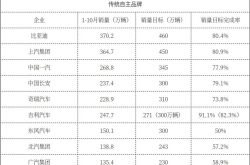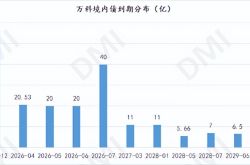From $1 Trillion to $5 Trillion: Is NVIDIA's AI Boom a Bubble Waiting to Burst?
![]() 11/21 2025
11/21 2025
![]() 396
396
By Yang Jianyong
NVIDIA has emerged as the most eye-catching company in the global capital market, soaring from a $1 trillion market valuation to a staggering $5 trillion in less than three years. This feat not only marks NVIDIA as the first company worldwide to breach the $5 trillion market cap milestone but also sets an unprecedented record in the capital market.

However, this meteoric rise has been accompanied by growing skepticism about an AI bubble, casting NVIDIA in the spotlight of controversy. Some critics even argue that the current AI hype surpasses the notorious dot-com bubble. Amidst these unprecedented discussions and doubts, NVIDIA's CEO, Jensen Huang, has consistently dismissed the notion of an AI bubble, emphasizing fundamental differences between today's AI landscape and the dot-com era.
Amidst the bubble speculation, NVIDIA has countered with a robust financial report, showcasing sustained revenue growth and revealing a staggering $500 billion in backlogged chip orders, indicating robust market demand for its GPUs.
The demand for NVIDIA's chips remains red-hot, with the Blackwell series flying off the shelves and cloud GPUs in short supply, fueling continuous revenue expansion. For the third quarter of fiscal year 2026, NVIDIA reported revenue of $57 billion, up approximately $22 billion from $35.08 billion in the same period last year, marking a 62% year-over-year increase. Notably, the data center segment shone brightly, reaching $51.2 billion, a 66% year-over-year surge.
Looking ahead to the next quarter, NVIDIA projects fourth-quarter fiscal year 2026 revenue to be around $65 billion, with a 2% fluctuation range, while analysts had estimated $62 billion. This guidance significantly surpasses analyst expectations. Meanwhile, NVIDIA holds $500 billion in backlogged chip orders, signaling continued strong demand for its GPUs.
Despite exceeding expectations and securing substantial orders, market anxiety over an AI bubble has not fully subsided, thrusting this AI behemoth into the center of market speculation.
Following the financial report release, NVIDIA's stock experienced a reversal, declining during trading and closing down 3.15%, erasing $140 billion in market value overnight. Its current market valuation stands at $4.39 trillion, down $760 billion from its peak of $5.15 trillion, representing a 15% retracement.
Overall, amidst the global surge in AI large models, NVIDIA's chip demand has skyrocketed, driven by continuous capital expenditure expansion from global cloud service providers on AI infrastructure.
To enhance their AI large model competitiveness, tech giants have embarked on a new round of AI competition, increasing capital spending on AI infrastructure. Microsoft, Google, and others alone are projected to invest $400 billion in AI by 2025. Meanwhile, IDC forecasts global AI investments to exceed $1.2 trillion by 2029.
This global capital expenditure underscores that AI large model services have become a strategic battleground in tech competition. With ample cash reserves, these giants are poised to continue investing heavily in data centers in the coming years to bolster their AI market competitiveness.
Benefiting from AI infrastructure construction, the global semiconductor market is experiencing robust growth, on track to become a $1 trillion market. IDC expects global semiconductor revenue to reach $800 billion by 2025, with the computing segment growing 36% to $349 billion.
Tech giants are vying to purchase NVIDIA's high-performance chips for AI infrastructure, making NVIDIA's chips scarce and highly sought after, driving sustained rapid revenue growth. NVIDIA has not only become the world's largest chipmaker but also tops the global market value ranking, making it one of the most profitable tech companies globally, with annual profits exceeding $100 billion.
In collaboration with OpenAI, NVIDIA will deploy at least 10 gigawatts of its systems for OpenAI's next-generation AI infrastructure. It also partners with Google Cloud, Microsoft, Oracle, and xAI, leveraging hundreds of thousands of NVIDIA GPUs to build AI infrastructure.
Due to the strong demand for NVIDIA's chips across various sectors, NVIDIA's CFO stated during the earnings call that AI infrastructure demand continues to exceed expectations, with potential revenue of $500 billion from the Blackwell and Rubin platform projects.
NVIDIA is undoubtedly the biggest winner in this AI wave, achieving rapid growth in revenue, net profit, and market value, becoming the first company worldwide to surpass a $5 trillion market valuation and successfully capitalizing on AI large model market opportunities. Huang Renxun stated during the earnings call that computing demand in training and inference continues to accelerate exponentially.
Few could have predicted that NVIDIA's GPUs, originally designed for gaming, would become the driving force behind global tech development. Meanwhile, NVIDIA is spearheading the transition from general-purpose GPU computing to GPU-accelerated computing.
Finally, with the rapid development of generative AI technology, the semiconductor industry landscape is undergoing profound restructuring, reshaping the global tech landscape. NVIDIA is the biggest winner in this wave, dubbed the world's strongest stock, with investor enthusiasm for AI large models driving NVIDIA's stellar capital market performance.
However, as NVIDIA's stock price continues to soar, concerns about a bubble persist, harboring significant risks. It raises the question of whether AI is creating wealth or a bubble trap amidst capital exuberance. Meanwhile, there are accumulated risks of profit-taking adjustments, and tech giants are seeking more diversified chip supplies to reduce reliance on NVIDIA.
Yang Jianyong, a Forbes China contributor, expresses views solely on his own behalf. He is dedicated to in-depth analysis of cutting-edge technologies such as AI large models, artificial intelligence, IoT, cloud computing, and smart homes.








